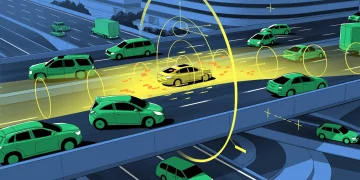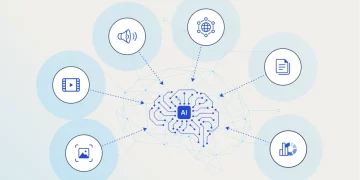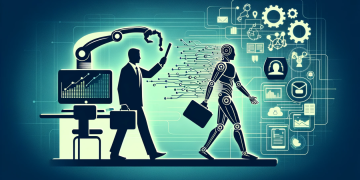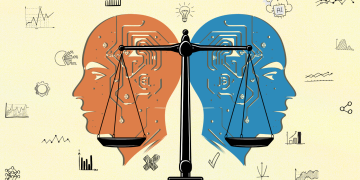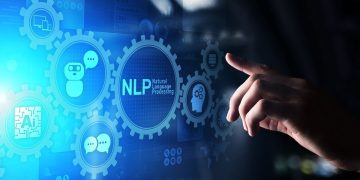Introduction:
The global climate crisis has become one of the most pressing challenges of our time. As the world faces rising temperatures, extreme weather events, and environmental degradation, there is a growing need for innovative solutions to mitigate and adapt to the changing climate. Artificial Intelligence (AI) is emerging as a powerful tool that holds the potential to transform how we approach climate change, from optimizing energy use to developing new materials and technologies. But how do technology innovators—who are at the forefront of AI development—view AI’s role in addressing global climate change?
In this article, we explore how leading technology innovators perceive the potential of AI in combating climate change. We examine their insights into the opportunities, challenges, and ethical considerations surrounding the application of AI in environmental sustainability.
1. AI’s Potential to Optimize Energy Systems and Reduce Emissions
One of the most immediate and promising applications of AI in the fight against climate change is in the optimization of energy systems. With AI, it is possible to design more efficient energy grids, optimize the use of renewable energy, and reduce energy waste. By providing real-time insights and predictive capabilities, AI can improve the management of power distribution, lower carbon footprints, and enable the transition to cleaner energy sources.
1.1. Dr. Demis Hassabis: AI in Energy Efficiency and Sustainability
Dr. Demis Hassabis, co-founder and CEO of DeepMind, has been a vocal advocate for AI’s potential in solving global challenges, particularly in the realm of energy efficiency. In 2016, DeepMind’s AI system made headlines when it was used to optimize cooling systems in Google’s data centers, resulting in a 40% reduction in energy use. This success demonstrated how AI could help reduce energy consumption in high-tech industries—an area where energy use is typically high and emissions are significant.
Hassabis believes that AI has the potential to transform energy systems across the globe by improving energy storage, distribution, and consumption. AI-driven systems can integrate renewable energy sources, such as wind and solar, into the grid more effectively by predicting energy demand and supply in real-time. Additionally, AI can be used to design energy-efficient buildings, optimize transportation systems, and enhance industrial processes to minimize waste.
According to Hassabis, AI can contribute to accelerating the transition to a low-carbon economy by identifying energy-saving opportunities that would otherwise go unnoticed. By making systems more efficient, AI can play a critical role in reducing global emissions and advancing environmental sustainability.
2. AI in Climate Research: Modeling and Predicting Environmental Change
AI is increasingly being used to model and predict climate patterns, helping scientists and policymakers understand the future trajectory of climate change and devise appropriate strategies for mitigation and adaptation. By processing vast amounts of data from climate models, satellite imagery, and environmental sensors, AI can uncover patterns that are difficult for humans to detect, leading to more accurate predictions.
2.1. Dr. Jennifer D. Turner: AI for Climate Change Prediction
Dr. Jennifer D. Turner, a scientist and climate expert, has been exploring the use of AI in climate modeling and predicting environmental change. She emphasizes that climate models are essential for understanding the effects of climate change and making informed decisions about policies, infrastructure, and disaster preparedness. However, traditional climate models are complex and computationally intensive, often requiring weeks or even months to process.
AI can help solve this issue by accelerating climate simulations. By using machine learning techniques, AI can quickly analyze historical climate data and predict future changes in temperature, sea levels, and weather patterns with higher precision. AI can also enhance the accuracy of climate models by continuously learning from new data and adjusting predictions accordingly.
Turner believes that AI can also assist in forecasting extreme weather events, such as hurricanes, floods, and droughts, enabling governments and communities to take proactive measures and save lives. The ability to predict and respond to these events more effectively is crucial in a world facing increasing climate-related disasters.
3. AI in Natural Resource Management and Conservation
AI is also playing a critical role in the sustainable management of natural resources and the conservation of biodiversity. By utilizing AI-powered tools, conservationists and environmental organizations can monitor ecosystems, track endangered species, and assess the health of forests, oceans, and other natural habitats.
3.1. Dr. Fei-Fei Li: AI for Environmental Conservation
Dr. Fei-Fei Li, a leading AI researcher and professor at Stanford University, has focused much of her work on using AI for environmental conservation. Her efforts include using AI-powered image recognition tools to monitor wildlife populations, track illegal deforestation, and detect environmental threats in real time. One notable project involves the use of AI to analyze drone footage of forests to identify illegal logging activities and monitor the health of ecosystems.
Li emphasizes that AI’s ability to process large datasets from satellites, drones, and sensors provides unprecedented insight into the state of the planet’s natural resources. For example, AI can analyze satellite images to monitor land use changes and identify deforestation trends before they become irreversible. This allows conservationists to act more quickly and implement more targeted interventions to protect biodiversity.
Li argues that AI can be a game-changer in the fight against climate change by supporting the protection of carbon sinks, such as forests, wetlands, and oceans, which play a vital role in absorbing carbon dioxide and mitigating the impacts of climate change.

4. AI in Sustainable Agriculture: Optimizing Food Production and Reducing Waste
Sustainable agriculture is another area where AI can make a significant impact. AI technologies can help optimize crop production, reduce the environmental impact of farming, and reduce food waste—one of the major contributors to greenhouse gas emissions.
4.1. Dr. Rajiv Shah: AI and Precision Agriculture
Dr. Rajiv Shah, the former Administrator of USAID and the President of the Rockefeller Foundation, has been involved in promoting AI applications in agriculture to address food security and climate change. Shah believes that AI-powered precision agriculture can transform the way food is produced, enabling farmers to optimize water use, reduce pesticide application, and increase crop yields, all while minimizing environmental damage.
AI technologies can assist farmers by providing real-time insights into soil health, weather patterns, and pest activity. Machine learning algorithms can predict the best planting times, recommend the ideal amount of irrigation, and identify crop diseases early, allowing farmers to respond more effectively and sustainably.
Additionally, AI can help reduce food waste by optimizing supply chains, ensuring that food is transported efficiently, and minimizing losses. By utilizing AI to improve the efficiency of food production, we can reduce the carbon footprint of agriculture and contribute to a more sustainable food system.
5. Ethical Considerations and Potential Risks of AI in Climate Solutions
While AI offers tremendous potential for addressing climate change, it also raises important ethical and societal questions. The use of AI in climate solutions must be carefully managed to avoid unintended consequences and ensure that the benefits are distributed equitably.
5.1. Dr. Timnit Gebru: Addressing Bias and Equity in AI for Climate Action
Dr. Timnit Gebru, a leading researcher in AI ethics and co-founder of the Black in AI initiative, has been vocal about the ethical implications of AI in various fields, including climate action. Gebru cautions that AI systems are often designed by a narrow group of individuals with limited perspectives, leading to bias and inequitable outcomes.
When it comes to climate solutions, Gebru argues that AI tools must be developed and implemented in a way that prioritizes fairness and inclusivity. For example, AI-driven climate models or conservation tools must consider the diverse needs of vulnerable communities, such as low-income populations and marginalized groups, who are often the hardest hit by climate change.
Gebru also raises concerns about the energy consumption of AI systems themselves. The development and training of AI models, particularly in fields like deep learning, can require significant amounts of computational power, contributing to carbon emissions. She stresses that the environmental impact of developing AI systems must be considered alongside their potential benefits in combating climate change.
6. Conclusion: AI as a Vital Tool in the Global Climate Fight
The views of technology innovators such as Demis Hassabis, Jennifer D. Turner, Fei-Fei Li, and Rajiv Shah highlight AI’s transformative potential in addressing the global climate crisis. From optimizing energy systems and improving climate modeling to supporting conservation efforts and sustainable agriculture, AI can play a critical role in combating climate change.
However, as Timnit Gebru and others point out, AI also comes with ethical challenges and risks, particularly regarding bias, equity, and environmental impact. As AI continues to evolve, it is essential for policymakers, researchers, and tech innovators to collaborate in developing frameworks that ensure AI is used responsibly and effectively in the fight against climate change.
Ultimately, AI holds tremendous promise, but its successful integration into climate solutions will depend on careful consideration of its ethical, social, and environmental implications. By approaching AI with a focus on equity, sustainability, and accountability, we can unlock its full potential to help mitigate the effects of climate change and create a more sustainable future for all.



